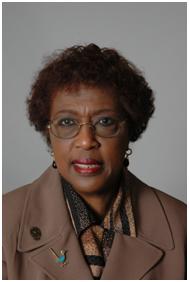
EIGHTH EPISCOPAL DISTRICT
HEALTH MINISTRY (VOL 10)
October 2023

Dr. Patricia D. McKenzie
Episcopal Coordinator for Health Ministries
Social Share
PART I.
NATIONAL HEALTH OBSERVANCES FOR October 2023
A. DOMESTIC VIOLENCE AWARENESS MONTH
Source: National Coalition Against Domestic Violence. www.ncadv.org/
FACTS:
- 474 gun related domestic violence fatalities this year;
- 10 million people a year are physically abused by an intimate partner
- 20,000 calls are placed a day to domestic violence hotlines
- 20% of women in U.S. have been raped.
Domestic violence is the willful intimidation, physical assault, battery, sexual assault and other abusive behavior as part of a systematic pattern of power and control over a partner. It is an epidemic affecting every community. Domestic violence can result in physical injury, psychological trauma and even death. It can cross generations and last a lifetime. You cannot always identify an abuser in the early stages of a relationship because the person may seem wonderful and perfect, but gradually becomes aggressive and controlling. Early behavior may include name calling, threats possessiveness or distrust. The abuser apologizes profusely, always claiming their love and care for the person. However, control always intensifies and can lead to threats to kill or hurt the victim or others if that person speaks to family or friends. Some examples of abusive tendencies:
- Telling the victim that they can never do anything right;
- Accusing the victim of cheating;
- Controlling every penny spent in the household;
- Dictating how the victim dresses or wears their hair;
- Stalking the victim or monitoring the victim’s every move.;
- Pressuring the victim to have sex;
- Destroying the victim’s property.
The violence is not always physical, but the abuser is just as dangerous when it is emotional and psychological.
If the victim escapes, the abuser may still stalk, harass, threaten or try to control the victim. 1/5 of homicides victims with restraining orders are murdered within two days of obtaining the order; 1/3 are murdered within the first month.
Victims stay because of fear, unsupportive family and friends and lack of knowledge of or access to safety and support.
For anonymous, confidential help available 24/7-call the National Domestic Violence Hot line at 1-800-799-7233 (SAFE) or 1-800-787-3224 (TTY).”
B. NATIONAL BULLYING PREVENTION MONTH
Source: Pacer’s National Bullying Prevention Center. www.pacer.org/bullying
FACTS:
“One out of every five students report being bullied during a school year.
Bullying is defined-
- As aggressive, unwanted behavior which hurts or harms another person physically or emotionally, those targeted have difficulty stopping the action directed at them;
- There is a perceived or real imbalance of power which is used to control or harm others;
- The behavior is repeated or has the potential to be repeated.
Types of bullying: physical as fighting, hitting or name calling or covert through gossiping, leaving someone out on purpose; using technology like phones, computers and tablets, texts, social media or gaming. It can be a single incident or repeated behavior. Covert or subtle behavior as manipulation of how someone is perceived, damaging someone’s reputation or spreading false information. Stop Bullying-parents, school staff and other adults must talk about it and build a safe school environment and community-wide bullying prevention strategy. Know the law-sometimes bullying overlaps with discriminatory harassment which is under federal civil rights laws. Schools can establish and enforce rules and policies that clearly describe how students are expected to treat each other. Kids/students can treat everyone with respect. Reaction to being bullied-look at the bully and tell him or her to stop in a calm, clear voice; if speaking up is not safe, walk away and find an adult. To protect yourself from cyberbullying- always think about what you post, being kind to others online will help keep you safe; don’t share anything that could hurt or embarrass anyone. Keep password secret, us privacy settings to control who sees what. Talk to an adult if you get or see a message that makes you sad or scared. When you see bullying talk to a parent, teacher or another adult you trust who is available. Use resources on the website–Stopbullying.gov. Also, find materials to download on: www.pacer.org/bullying/pdf/BP-101-adultspdf and wwwpacer.org/bullying/take-action/”
C. NATIONAL BREAST CANCER AWARENESS MONTH
Source: National Breast Cancer Foundation. www.nationalbreastcancer.org
FACTS:
“Causes of Breast Cancer-1 in 8 women will be diagnosed in her lifetime. No one knows the exact causes, but it is always linked to damage to a cell’s DNA. 60%-70% of people with breast cancer have no connection to known risk factors. It occurs nearly 100 times more often in women than men; more women are diagnosed after age 55; more in Caucasian women; more in women having their first child at an older age or never having given birth; having dense breast tissue, making lumps harder to detect. Lifestyle factors to avoid include sedentary lifestyle, should move the body or exercise for 20 minutes a day will help; alcohol consumption; hormone replacements therapy; avoid diet high in saturated fat and lacking fruits and vegetables, eat at least 3-5 cups of fruits and vegetables daily; being overweight or obese after going through menopause; having radiation to the chest before the age of 30. Myths unrelated to breast cancer: wearing under wire bra, implants, deodorants, antiperspirants, mammogram, caffeine, microwaves, or cellphones.
Early detection occurs with monthly breast self-exam, check closely for nipple tenderness or lump or thickening in or near breast edge or under the arm all lumps should be checked by your Dr.; even though all lumps are not cancerous; scheduling regular clinical breast exams and mammograms beginning at the age of 40.
Men and cancer-Each year it is estimated that approximately 2,800 men will be diagnosed with breast cancer. This year 530 men are predicted to die. Men should also do a breast self-exam regularly in the shower and report any changes to their Dr. Men carry a higher mortality then women by 25%. This occurs because men fail to do self-exams and they delay seeing the /Dr.
Resources: National Mammography Program, check with local Cancer Society. If Mental Health challenge-call 988. To support your mental, emotional and physical health, may practice Mindfulness Meditation.”
PART II.
HEALING AIDS FROM THE BALM IN GILEAD
Source:
Click on Education and Inspiration and find to topics-Sunday Morning Health Corner and Resources
Facts:
PART III.
CENTER FOR DISEASE CONTROL AND PREVENTION
A. Health Literacy.
FACTS:
Why is health literacy important?
For Fall/Winter Virus Season.
FACTS: A.
Archives


HEALTH MINISTRY IN THE EIGHTH EPISCOPAL DISTRICT (VOL 12-2024)
HEALTH MINISTRY OF THE EIGHTH EPISCOPAL DISTRICT (VOL 10-2024)

HEALTH MINISTRY IN THE EIGHTH EPISCOPAL DISTRICT (VOL 3-2024)

HEALTH MINISTRY IN THE EIGHTH EPISCOPAL DISTRICT (VOL 1-2024)

